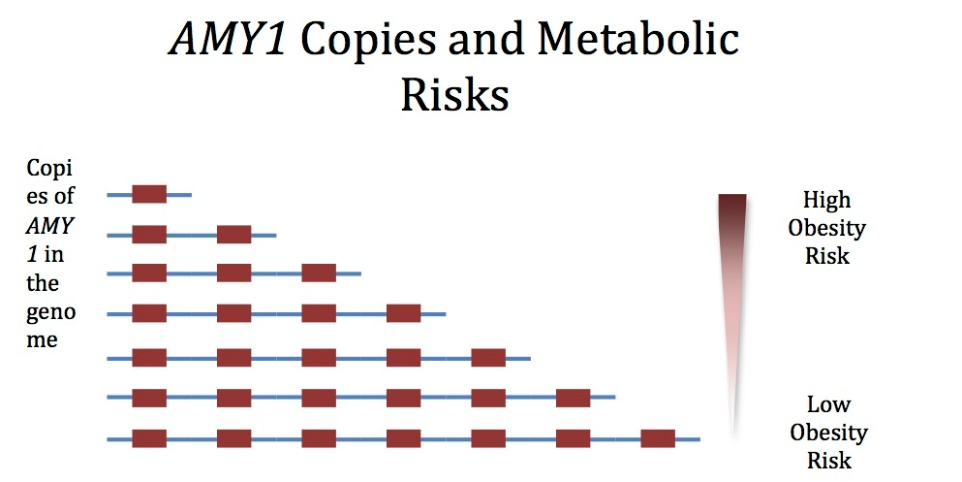
Genetic Diet Testing Sydney, Liverpool, Parramatta
Genetic Diet Test
Imagine with one Genetic Diet Test known as AMY1 and what category (1 – 20) it falls, one can determine the amount of Carbohydrates “Starch” your body can digest or handle as shown in these pictures.


But why is this Test is Important?
And why should you care about your AMY1 gene?
Scientific studies have shown that variations in the human salivary amylase gene (AMY1) differ based on populations who have traditionally eaten high starch diets compared to those who have traditionally eaten low starch diets. Variations within the AMY1 gene influence how well your body can breakdown and process starch, meaning that some people can tolerate carbohydrates better than others.
Starch is the most common carbohydrate included in human diets – however, there is a considerable range of variation between cultures of dietary starch. Traditionally, “high starch” populations tended to be agricultural societies and arid region hunter-gathers, while “low starch” populations included rainforest and arctic hunter-gatherers and some pastoralists.
More recently population shifts and cultural changes mean that links to traditional cultural diets have (been distorted) blurred. Generally, European-American diets and Asian rice based diets suggest these populations are more likely to have AMY1 gene variants that support improved starch digestion. However even within these populations there is variation among individuals in relation to AMY1 and starch metabolism.
What is the variation in the AMY1 gene?
The variation in the AMY1 gene that has been studied is known as a copy number variation (CNV). A CNV means that one or more segments of the DNA vary by having more or less copies (or repeats) in a section of that DNA.
DNA copy number variation is a widespread phenomenon among humans although this was not uncovered until the completion of the Human Genome Project (in the early 2000s). To date, more copies in a gene have been identified and this suggests that the copies are favoured in evolution and are beneficial in some way.
The AMY1 gene has evolved in humans to have an increased number of copies. Chimpanzees have two copies of the AMY1 gene, while humans average 6 copies, but can have up to 20 copies. Scientific research has linked the adaptation to a high-starch diet as the additional copies of AMY1 improve the ability to digest starchy food.

How does the variation in the AMY1 gene work?
Recent research has shown that variations in the AMY1 gene affect the amount of alpha-amylase enzyme within saliva. For example in individuals with more copies of AMY1 the higher their salivary alpha-amylase enzyme levels. This salivary alpha-amylase is a key enzyme supporting the processing of starch in the human body. Salivary amylase can account for up to 50% of total salivary protein in some individuals whereas others produce barely detectable concentrations.
What will knowing my AMY1 gene variation tell me?
Lower AMY1 copy number indicates:
- Reduced amount of enzyme in our saliva needed to break down starch
- A reduced tolerance of high-starch diets
- A greater risk or predisposition to obesity
- Reduced glycaemic control (reduced glucose or blood sugar control)
- Increased risk for metabolic abnormalities
Find out today how we can help you with the genetic diet test. We can help you achieve your ideal Weight through our health action plan.
Call Tony Jaafar Now on 0411311767








 +61 412 244 677
+61 412 244 677 info@healthandfood.com.au
info@healthandfood.com.au